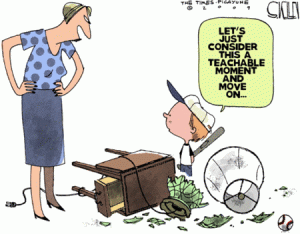 With all the olympic buzz as we approach Sochi, I have come across a lot of pictures of athletes using parachutes and bungee cords as part of their training.
With all the olympic buzz as we approach Sochi, I have come across a lot of pictures of athletes using parachutes and bungee cords as part of their training.

It reminded me of a 14 year old kid that lived in a group home but used to spend some weekends with my family. He came from a brutal family with numerous overlapping layers of abuse and neglect and dysfunction. He was already on probation and had a crowd of kids that he was not supposed to associate with.
After a couple of months of hanging out with my family and the youth ministry I was leading at the time we really began to notice that are young friend was starting to show signs of turning his life around. He was being more positive, he was showing up for classes, and he was even beginning to talk about the kinds of things he would love to do with his life.
Then I got a call from his social worker informing that he wouldn’t be visiting the next weekend as he had taken off with the kids he was supposed to stay away from and hadn’t come home that week. That was the last we heard from our young friend. I was sad and discouraged.
As I have reflected on that experience over the last decade I realize that it was like my young friend was harnessed to powerful bungee cords that only seemed to pull on him when he began to move his life in a positive direction. Every step towards responsibility and freedom required more and more energy – energy that he obviously didn’t have.
Sadly my young friend had finally just given up the fight and returned to the path of least resistance.
The reality is that my young friend is not unique in his struggle. Even without the layers of tragic dysfunction and abuse of my young friend – as soon as we decide to move in the “right” direction it feels like somebody snaps us into a bungee harness.
I love how Steven Pressfield (Author of The Legend of Baggar Vance, and numerouns amazing historical fiction novels) sheds light on this unavoidable aspect of the human condition in his profound little book “The War of Art”
What is the most toxic force in the world?
Resistance is the most toxic force on the planet.
It is the root of more unhappiness than poverty, disease, and erectile dysfunction.
To yield to resistance deforms our spirit.
It stunts us and makes us less than we are and were born to be…
…If you believe in God (and I do) you must declare Resistance evil, for it prevents us from achieving the life God intended when He endowed each of us with our own unique genius.
I don’t think that Pressfield is actually overstating things by calling resistance the most toxic force on the planet.
Resistance is EVIL – it wages war against anything good that we try to create.
Resistance is EVIL – because of what isn’t accomplished if it wins.
Resistance is EVIL – because it stands in the way from us discovering our “unique genius.”
Pressfield is echoing an observation that humans have been making for thousands of years. The 1st century Christian writer and apologist Paul said it this way in Romans 7:17-20 MSG…
Something has gone wrong deep within me and gets the better of me every time.
Paul actually refers to the resistance as a “sabatoge” – a battle that is fought within us with no external foes to blame.
The existance of resistance is something that everyone must come to terms with. What does it mean? Why is it present? Your answer will shape the trajectory of your life. I myself resonate with Paul’s conclusion in Romans 7:25 – which you are welcome to follow up on yourself.
Regardeless of how you answer the bigger problem for the existence of resistance – I do believe that anyone can get better at minimizing the force of resistance in our lives…
- that paper, article, report or book that you know that you need to work on
- that lifestyle change involving changes to diet, habits, exersize, etc
- that person that everyone else seems to avoid, ignore or disrespect
If you want to overcome resistance – you need to get good at asking yourself 3 questions: WHAT > WHY > HOW
WHAT am i exactly trying to do?
- We need the clarity that comes from being able to “see” some sort of glimpse of where you are headed.
- Clarifying your VISION of what you are trying to do gives you a whole new lower gear set that can help you power through the resistance of your initiative.
WHY am I even trying to do this?
- Taking time to drill down into why something is important to do helps you to clarify whether or not an initiative aligns at all with what you are naturally PASSIONATE about.
- Doing something hard out of obligation is a shallow “why” – it is a pathetic power source.
- Doing something hard because it aligns with your PASSION is a deep “why” – it is almost an infinite power source!
HOW am I going to get it done?
- If you are going to go to war – you had better spend some time strategizing a plan. (Luke 14:31)
- We paint ourselves in to corners and blind alleys by barging into projects.
- You need to break every challenge into smaller parts – I use MPH to help:
- Mountains: Name the big mountains that need to be climbed,
- Path: Map out your best guess as to where you will need to go to get over the mountains.
- Handholds: Identify the goals that will make your progress tangible. (SMART goals of course)

So don’t believe the Borg – Resistance is not futile!
You can get better at overcoming resistance by learning to ask ourselves WHAT, WHY & HOW whenever we try and create anything new, noble or needed.
Talk amongst yourselves…
- what forms does resistance take when you try and create something new, noble or needed?
- Why do you think that we sabotage our best intentions?
- Which of the 3 questions (What/Why/How) do you think will help you the most? Why?






 Being a control freak is somehow more acceptable when a leader has put their own collateral on the line to get where they are – they have earned the right to call the shots. Even for CEO’s and other executives – there is an appreciation that they weren’t hired to necessarily win friend and influence people – they exist to increase shareholder profits. Volunteer driven organizations require a more sensitive and nuanced approach. NPO’s are usually driven by social profit and humanitarian values that clash with autocratic leadership styles that smack of self-centeredness. Faith communities are in theory fueled by an expectation of humble servant-leadership that makes being a strong leader a delicate balancing act between an uncompromising pursuit of vision and the self-motivation of a congregation to cooperate with it.
Being a control freak is somehow more acceptable when a leader has put their own collateral on the line to get where they are – they have earned the right to call the shots. Even for CEO’s and other executives – there is an appreciation that they weren’t hired to necessarily win friend and influence people – they exist to increase shareholder profits. Volunteer driven organizations require a more sensitive and nuanced approach. NPO’s are usually driven by social profit and humanitarian values that clash with autocratic leadership styles that smack of self-centeredness. Faith communities are in theory fueled by an expectation of humble servant-leadership that makes being a strong leader a delicate balancing act between an uncompromising pursuit of vision and the self-motivation of a congregation to cooperate with it.

 I was expected to start work at 8am. I remember sitting in the driveway listening to the news on the radio till 8:04 before wandering in to the shop and starting work. My boss (and good friend) had been their since 7am – even earlier during the spring rush. I was just an employee – a hireling – barely conscious of whether I was making the business money or losing it. Over time, I began to appreciate what it means to be owner – as I observed my boss bear the gravity of being the point leader of his own enterprise.
I was expected to start work at 8am. I remember sitting in the driveway listening to the news on the radio till 8:04 before wandering in to the shop and starting work. My boss (and good friend) had been their since 7am – even earlier during the spring rush. I was just an employee – a hireling – barely conscious of whether I was making the business money or losing it. Over time, I began to appreciate what it means to be owner – as I observed my boss bear the gravity of being the point leader of his own enterprise. 








